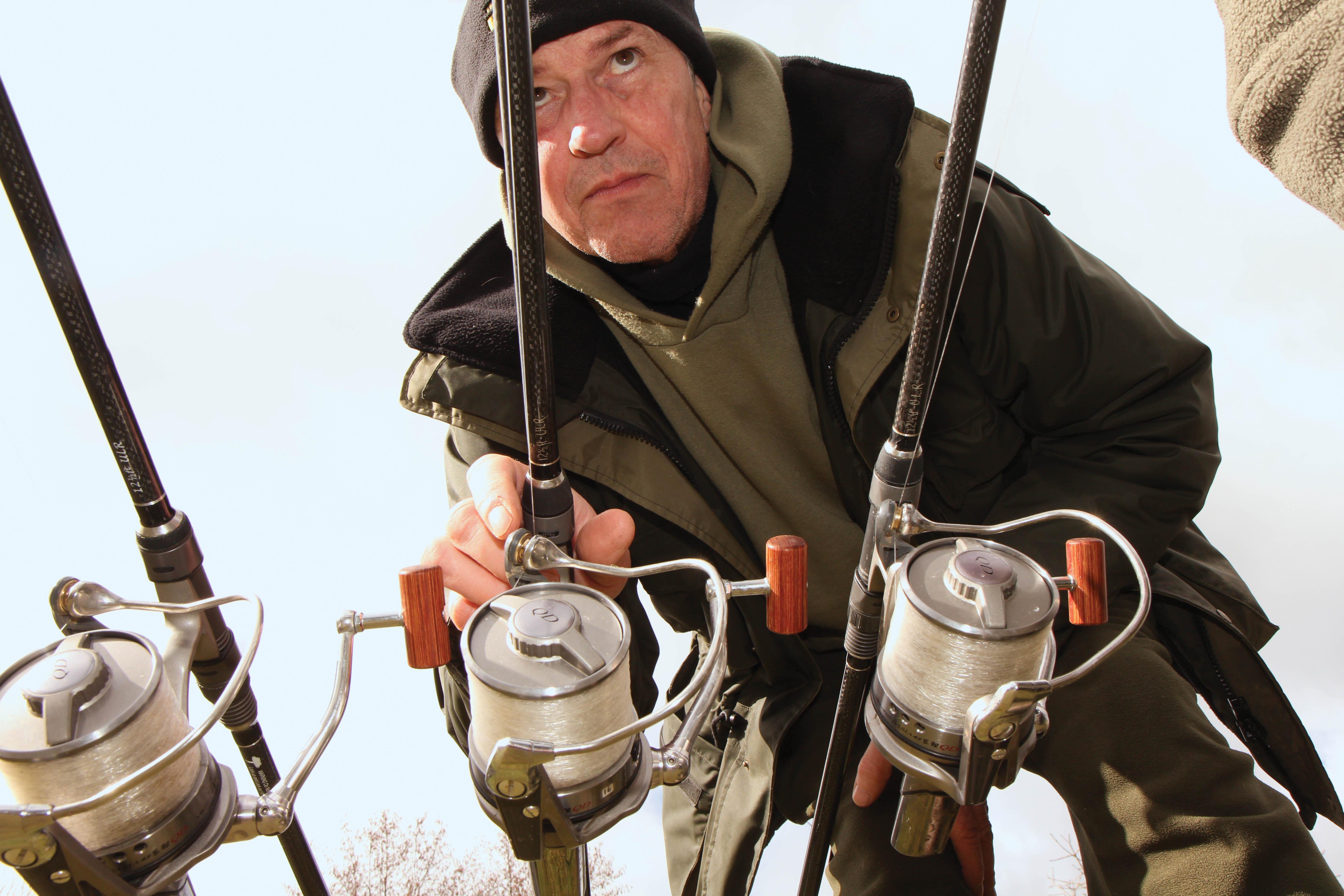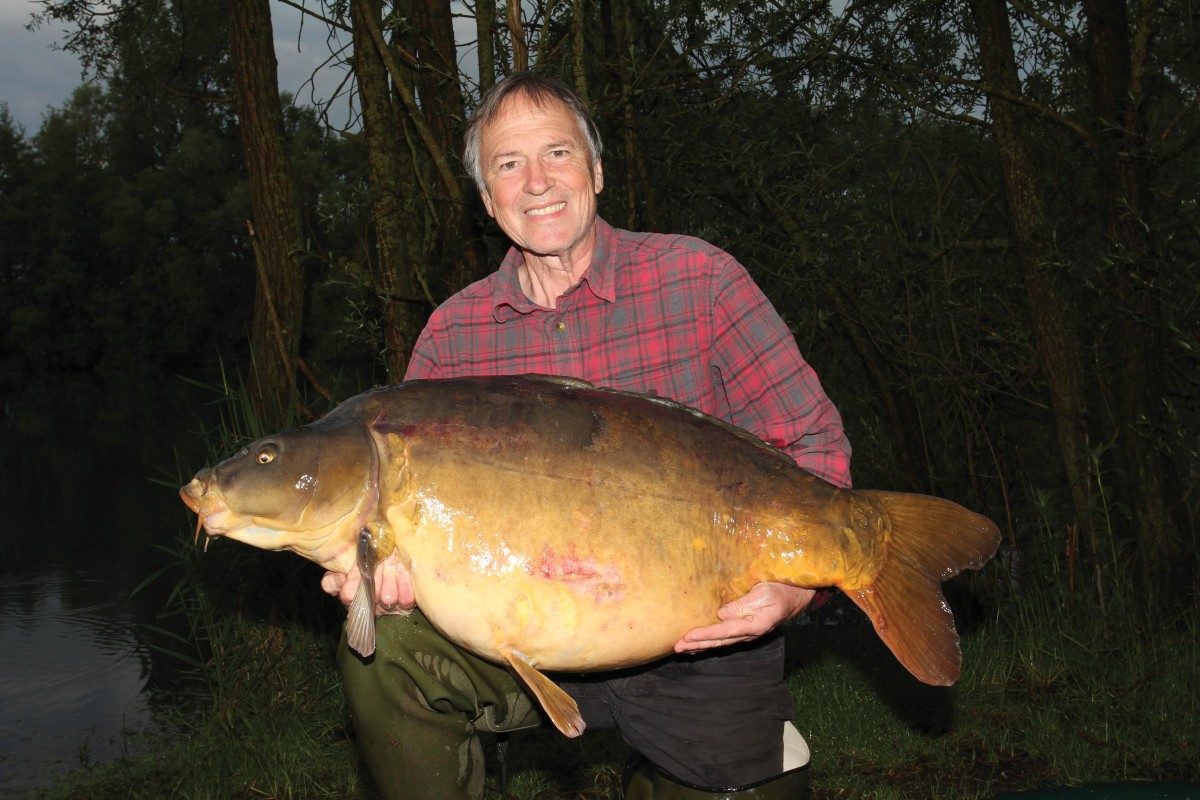
Pausing For Thought: Part One
The aggregation of marginal gains is a well-aired concept in sporting circles, and in his first thought-provoking article, John Baker explains exactly why he’s always 'rolled his own'...
Events during the past year have highlighted the importance of being out in the fresh air, and especially, of being by the water with the rods. Most of us have had more spare time available during the past few months, a fact clearly evident on the many club venues and commercial fisheries that have often been fully occupied by anglers. Carp fishing being a usually static pastime, provides ample opportunity for quiet thought and mindful deliberation. Recently, we may have taken time out to reflect on our current situation, and have perhaps reviewed things at work or at home. Family matters very much came to the fore during lockdown and we have all come to realise the importance of keeping fit and healthy, as well as perhaps thinking a little more about friends and relations.
From an angling point of view during such periods, we might reflect on former successes, or perhaps even analyse past mistakes. We might also consider a fresh tactical approach, make new plans for a different venue, or maybe think about changing our bait. All these require careful consideration and I think it does us no harm at all to pause for thought, slow down a little, and step back from the fast pace of life. Time is a precious commodity, and being able to use our time effectively on the bank takes careful planning. It can though, also bring about additional success from what might’ve been regarded as just another routine session.
I’m impatient - some might say hyperactive - and seemingly always have been, but I don’t feel any different to when I was in short trousers! I believe someone might’ve once said, ‘You can take the man out of the boy, but you can’t take the boy out of the man.’ Well, I’m still that boy! Quite why I took up carp fishing all those years ago still seems like a personal anomaly. My default programmed setting though, is to be sitting behind the rods, primed and ready for action. I’m sure we might all have a similar picture in our mind’s eye, one of the rods and bivvy all set up just as we like them, with the landing net propped up strategically to one side in readiness. This image stays with me always, and I’m sure it’s etched into all dedicated carp anglers’ psyche. It’s rather like riding a bike: we never forget how to do it. Perhaps it’s more appropriate to liken it to a default setting on a computer… in just a few metaphoric clicks, we’re in fishing mode. But what exactly, is that mode…?
The Impact of the Hair Rig
Fishing has been in my DNA since the early 1960s and I started carping well before the Hair Rig came along. This was a time when we had to stay awake all night, strike at every twitch and even hold the line between our fingers to feel for bites. If we didn’t do such things - and a whole lot more for that matter - the result was simple: we blanked!
In 1980 the Hair Rig changed carp fishing forever. It also changed our angling lives and our entire approach to the sport. We now tend to go camping whilst waiting for the fish to hook themselves. We sleep next to our rods, use state-of-the-art tackle, bait boats, and an eye-watering range of exotic bait attached to the most complex terminal rigs (many of which are completely unnecessary). All the technology that has evolved contributes to our unceasing efforts to generate more bites, fulfil increased levels of angling ambition and meet increasingly higher expectations - this all sounds like pressure to me!
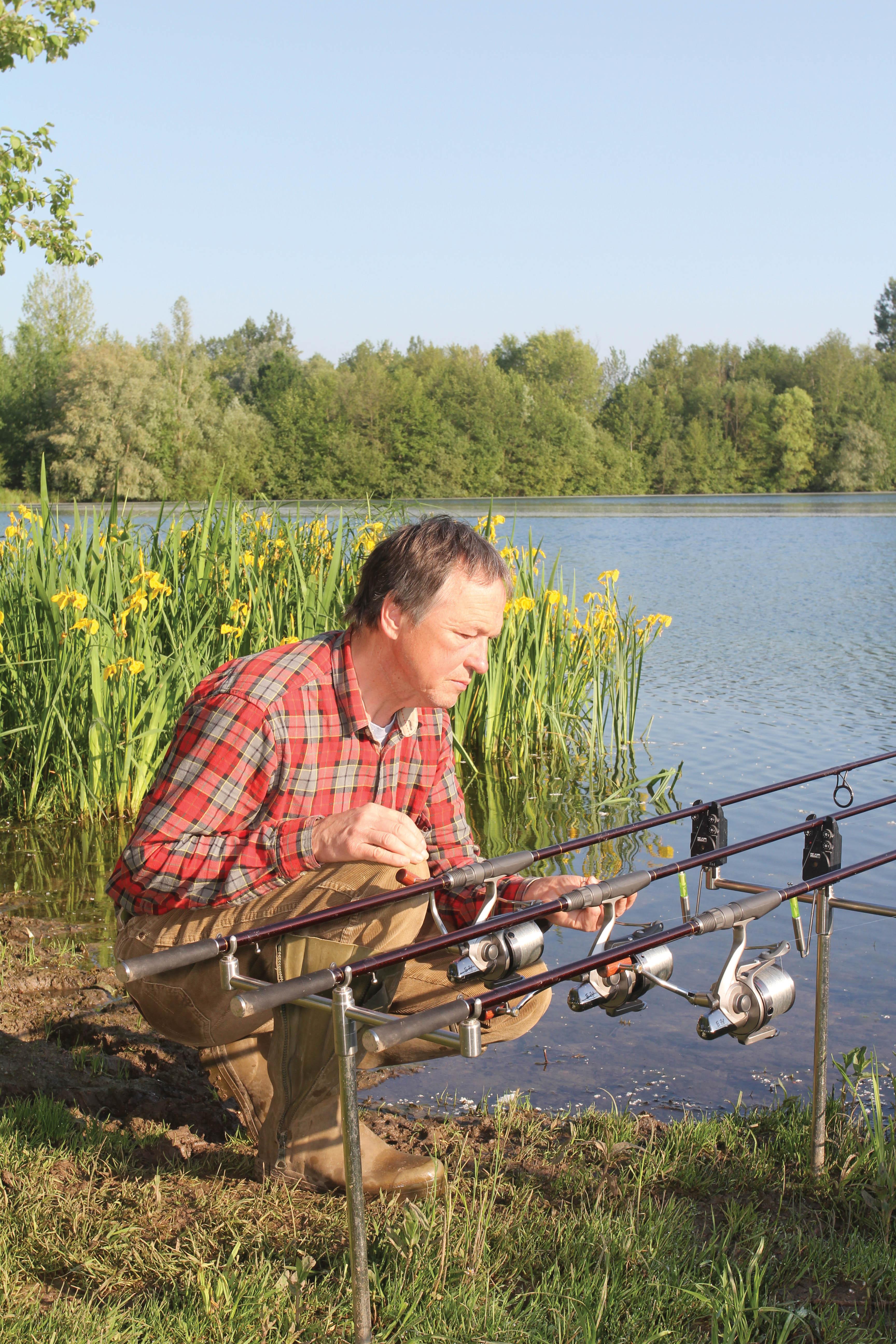
Habit or Hobby?
I would like to discuss the impact all this might have on our tactical approach, and thereby perhaps ignite fresh thoughts and new ideas. I have two key questions. Firstly, do we go ‘rod minding’ or do we go fishing? And secondly, is our own carp fishing a habit or a hobby? My great friend, Frank Warwick, alluded to this in a recent podcast. He brought into question the thought processes that long-term carp anglers might often go through, and also addressed how best we might maintain our interest and motivation for the sport. I like Frank’s honesty and these are valid points, well made by an angler of great experience.
As with many aspects of my life, I’ve constantly questioned my approach to carp fishing. I like to be different and have, for example, always used my own bait - and I mean always! I’ve never bought or used any specialist bait that I didn’t make myself. Some readers, I’m sure, will be surprised by this. I can state truthfully as such however, for the first time within these pages. For the sake of clarity, I started carp fishing seriously in 1970, and since that time, with the exception of the usual bread, worms, sweetcorn and luncheon meat that were popular at the time, I have never used any boilie or paste bait made by anyone but myself! I know this might make me sound like a control freak, but I hark back to that default setting I mentioned earlier; it’s the way I am. There might be a valid reason for my behaviour, and in the following lines I’ll endeavour to put some context on this aspect of my approach. I’d consider it a privilege if CARPology readers were to share these thoughts with me…
I certainly regard making bait as an intrinsic part of carp fishing. It’s a bit like tying our own flies when trout fishing; it’s just more enjoyable to catch a fish on a lure or bait that we created ourselves. It’s even more rewarding to achieve this under a cloak of secrecy, knowing that you can’t be copied. This surely offers the brave few one of the last great edges in carp fishing. So, for fear of stating the obvious, I like to find things out for myself, rather than rely on information relayed to me by others. In my experience, when anglers talk amongst themselves, much of what’s said is either exaggerated, or entirely made up and fuelled by rumour and hearsay, rather than being based on cold, hard facts.
I recall an early example of my being different. As a cash-strapped teenager, I had no spare money for fishing bait, so made all sorts of smelly pastes from whatever I could find in the kitchen or could buy off the shelf at the local supermarket. I made an arrangement with a couple of the high street food stores near me and would use their out-of-date pork sausages and sausage meat. The shopkeepers would keep bits and pieces by for me that were, of course, free of charge. I used these ingredients in various ways when making up paste baits for my chub and barbel fishing. They were very effective, and still are! I made up sausage pastes stiffened with breadcrumb or rusk, before graduating to baby milk powders and various bean flours and binders. Later, I added Indian culinary spices and these also proved to be very effective as carp bait additives. This was way back in the late ’60s and early ’70s, and at that time, the thought of buying someone else’s bait never really occurred to me. It would have been a bit difficult anyway, as specialist bait for carp simply wasn’t available. We had to make our own and our small group of friends just got on with it. We all made our own bait and we also constructed a number of items of fishing tackle too.
I bought blanks from Simpsons of Turnford and that great shop in North London, Dons of Edmonton, and it was there that I met master rod builder, Vic Gibson. We made rods, converted our old Heron bite alarms with GPO platinum relay contacts and upgraded the sounder boxes. We did all sorts of things, because we couldn’t just go to the tackle shop and buy what we needed. We looked forward to each session and would meet up at the lake to see what new kit or bait we’d brought with us. It was a brilliant time, and a truly innovative period.
There were many wind-ups and a great deal of mickey-taking went on during those early days. We got up to all sorts of tricks. We’d take tins of luncheon meat with us to leave in full view in the swim, whilst we’d actually be using some special paste bait or other. Another trick was to scatter a few weird-smelling baits in the marginal vegetation so other anglers might find it and think they’d discovered what we were using.
As time went on, the whole charade of secrecy and subterfuge became more sophisticated and came to a head with the inception of HNV (High Nutritional Value) baits. One member of our local club who’ll remain nameless, once told me that I would never find out what bait he was using. My reply was immediate; I told him that not only would I establish his key ingredients, but would then make something that he would never find out about! The competition at that time was such that the atmosphere was often highly charged!
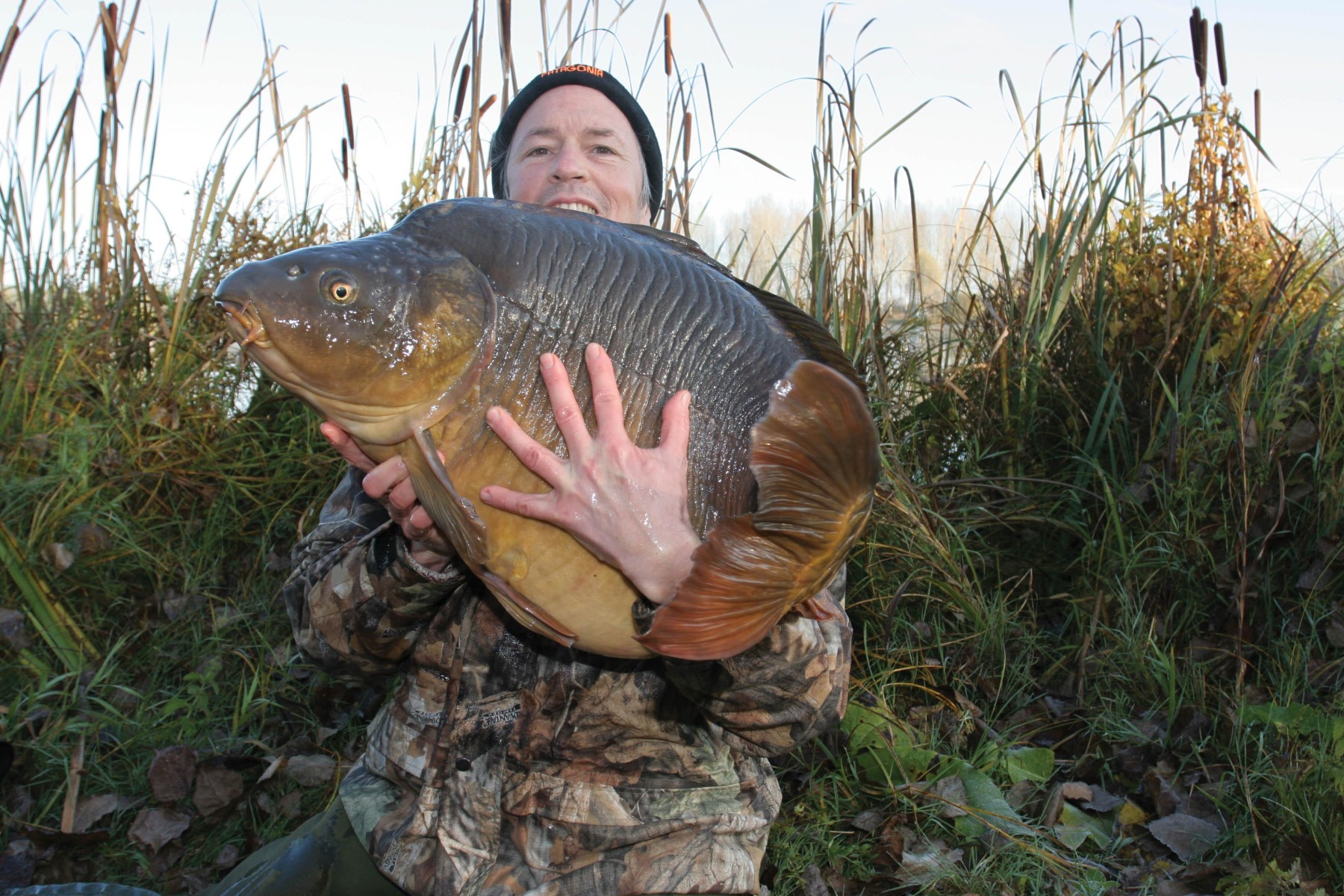
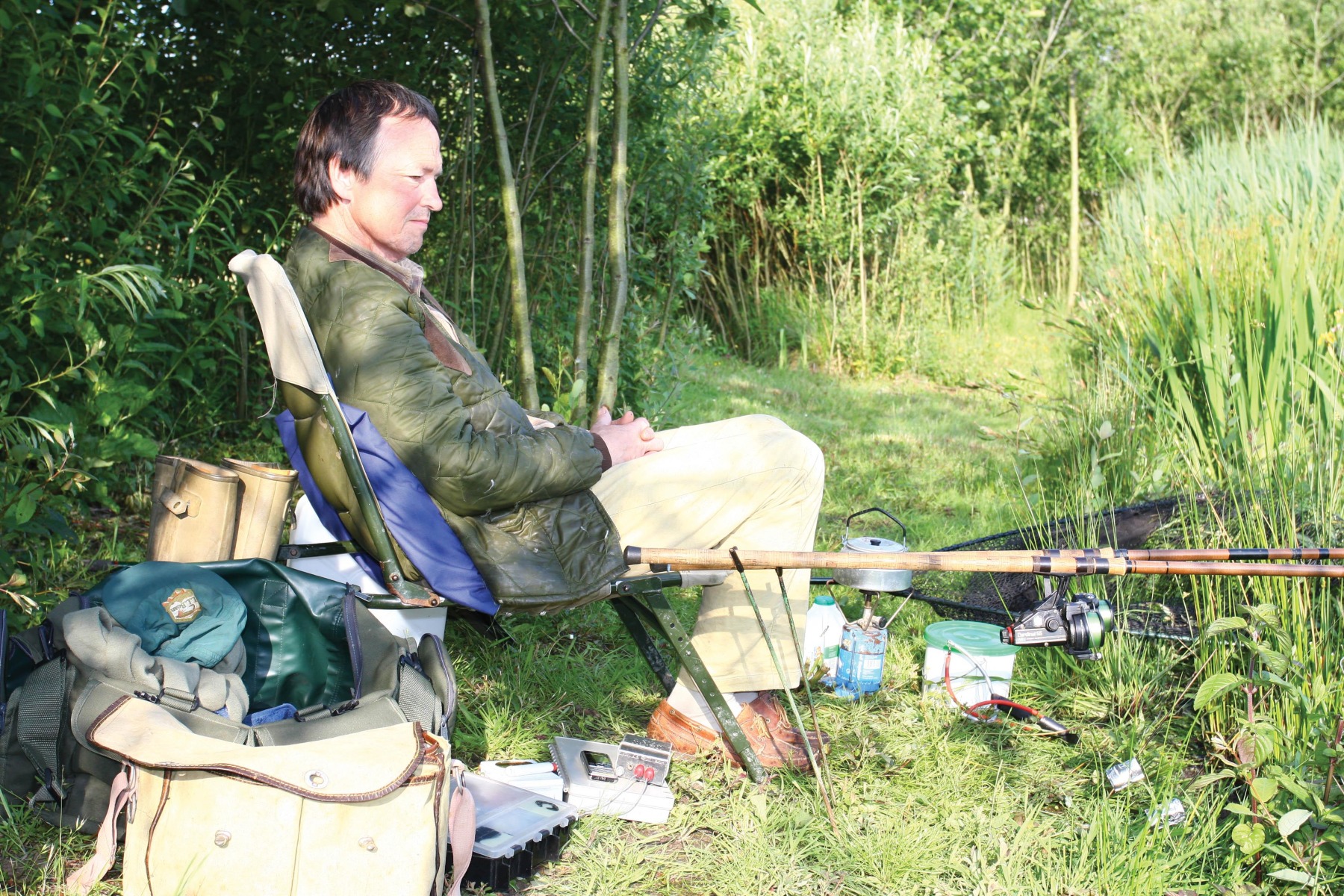
Be Different!
Now that I’ve put some context on my somewhat random thoughts, I should probably get back to the subject in hand. To do this, we’ll fast-forward to the here and now. These days, we know carp have come to depend on anglers’ bait, but then they would’ve done, as boilies have been in use for over 50 years. On some venues, anglers’ bait might provide more than 80 per cent of the resident stock’s diet. This fact alone is reason for us to think more about the bait we throw into the water. We should try and learn a little more perhaps, about what ingredients make up our own bait recipe and how different our bait is to the others used on the venues we fish.
We should also bear in mind that it isn’t always what we throw into the water that matters, as much as what others have thrown in before we arrive, otherwise we cannot come to understand what effect our bait may have on the fish, or how it might impact on our session on any given day. It’s also important that we get to know what might be happening on the different venues we fish. How do we plan for this? How do we understand why our bait might work, and more importantly, how best should it be applied? What behaviour should we adopt to maximise our time by the water?
The amount of time we spend at the waterside is a pivotal factor and we should do our best to learn how to make the most of it, rather than just go through some sort of routine. It would be a mistake if we measured our success against others who have more time available to fish than we do. It is though, important that we measure our own degree of success against those individuals who spend a similar amount of time at a venue. So, what should our approach be when our time is limited? How might we compete with those that some refer to as full-timers?
We may not enjoy the benefits of being sponsored by a bait firm and we might not feel confident when up against groups of anglers fishing as a team and who are all using the same bait. Countering these issues and having fun whilst fishing is what interests me, and I believe there are numerous ways to overcome such hurdles.
As I mentioned earlier, carp fishing may be in danger of becoming a habit - more a routine than a traditional hobby. Via mobile phones and laptops, anglers can run their businesses from the bivvy, and I know many people who do just that. They occupy swims for several days at a time and their mates take their place when they have the need to go home for a bath! Is it right and do we want this, and what effect is this having on our sport? It seems as though there are so many questions, and yet the answers lie mostly in our own hands, or perhaps those of club committees and fishery owners…
The Bird Table Effect
I have a passionate interest in the dietary requirements and the behaviour of carp. To discover why carp show a preference for different types of bait, we might look at a simple example of wild animals that have come to depend on humans for food. Take as an example, birds like finches, blackbirds and robins that regularly visit our gardens. If we place a new food item on a bird table - even perhaps, when there was no bird table in the garden previously - the birds learn quickly to accept what’s readily available. We can also then use different types of food to attract different species. These phenomena are likely due to there being periods when birds can’t obtain sufficient vital nutrients from what’s naturally available, and they have the genetic ability to learn that the food on our bird table contains what their bodies need. They do this very quickly, sometimes within a matter of hours - I stress that these creatures know to do this from instinct, but I don’t know exactly how.
We must also consider that the dietary needs of birds, fish and most animals will change with their environment. For instance, in winter, birds often require food with a higher fat content, most likely because it will be lacking in their natural food and they need it as a fast replacement-type of body fuel to help them survive the cold. Then, in spring, the females will require a good source of protein to help them ovulate, produce eggs and breed successfully.
Contrary to popular belief, carp benefit from a digestible dietary fat in winter. Carp also require, and benefit from any extra protein in their diet when the water warms. The additional protein assists in egg production and helps prepare them for spawning in just the same way as with birds, and this event only coincides with a consistent increase in water temperature. During such time, we should be thinking about changing our bait formulations in order to provide fish with a bait with a higher protein content, and ideally one that they’ll take benefit from quickly. I don’t think we should worry about introducing a new bait by heavily pre-baiting with it. If our bait is well formulated, broadly nutritious and put in the right place, carp will eat it immediately. Pre-baiting is beneficial, but only for the creation of hot spots or to produce our own bird-table, shall we say, on the bed of the lake. Recent studies have found that carp can evaluate a new food source within 24hrs of its introduction, and further evidence suggests that it takes carp under an one hour to decide whether they want to eat and consume it.
Over the past 50 years, particularly with regards to the use of boilies that contain high-quality ingredients, anglers have effectively taught carp to seek out and recognise these items as food that’s easy to eat. I believe that we’ve achieved this only after observing and taking typical examples of food dependence from other areas of nature - such as the example of the bird table outlined earlier. This idea is based on the original theory behind the use of HNV baits and the concept of using a hard, boilie-type bait developed in the early 1970s. The main reason boilies have become so effective is that they are more selective than traditional baits, or shall we say, more effective than bait that has a low, or lower nutritional value. It’s important to understand that boilies and special pastes evolved because we have the option of manipulating the ingredients to suit prevailing conditions. This point is very important, because it’s only by using and understanding various food ingredients to make boilies and pastes that we can completely control the true nutritional profile of a bait. With relatively little effort, bait enthusiasts can seek to control the protein, vitamin, mineral, carbohydrate, and fat contents of their baits. It’s also possible to control the shape, size, texture, colour, smell, taste, density and buoyancy of their offerings.
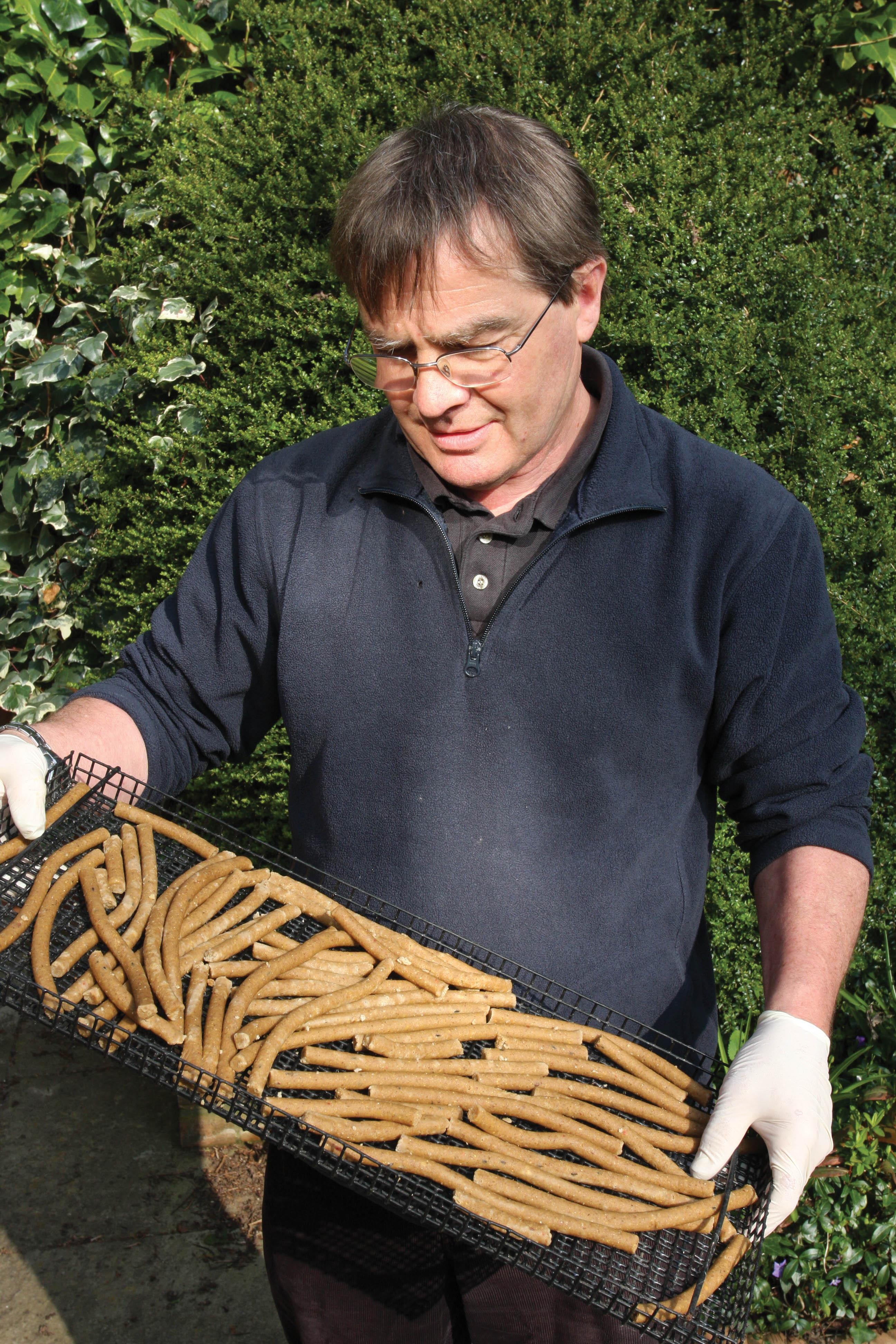
Infinite Versatility
It’s possible then, to control a dozen or so factors by understanding and making our own specialist bait, and surely no other aspect of our approach offers this almost infinite degree of versatility. When looking to implement this bait theory, carp are the perfect quarry… it’s not a hypothesis, it’s fact! Very few anglers take the time and make the effort to truly expand their understanding of bait design and fish nutrition. Those individuals that do, will have gained a major advantage over others. This whole concept is particularly pertinent in a sporting context. Athletes have learned to make numbers of small differences in their training regime and preparation that add up, and their accumulation leads to major improvements in their results.
Someone once said something to the effect that radical decisions bring radical results, and mediocre decisions bring mediocre results. I’ve followed this mantra throughout life, and it has helped me no end. Decisive action increases confidence levels and means that we are less likely to be put off by the barriers and difficulties that angling pressure presents on our fisheries.
Read part two by tapping here!
